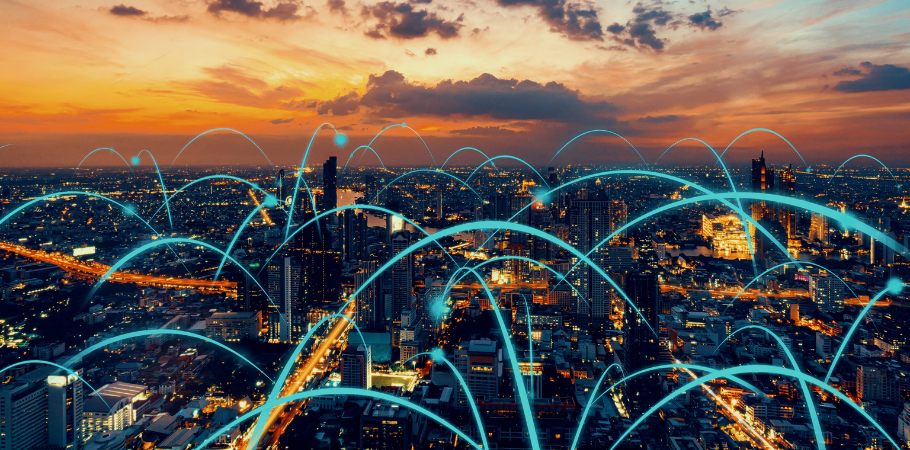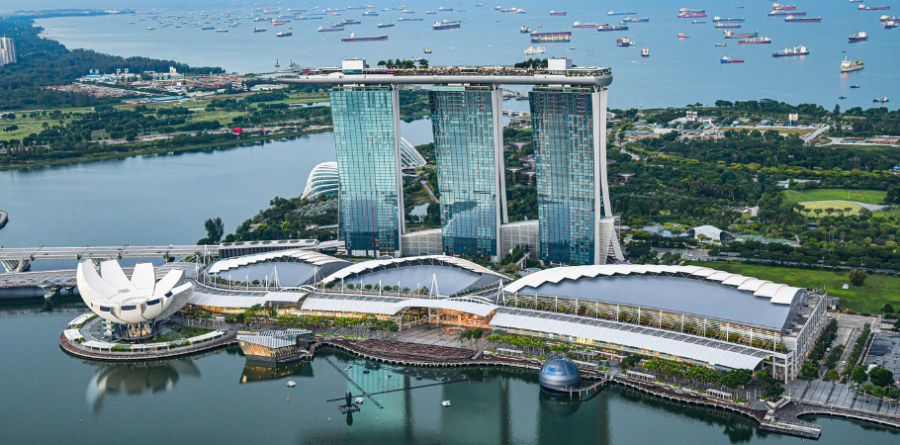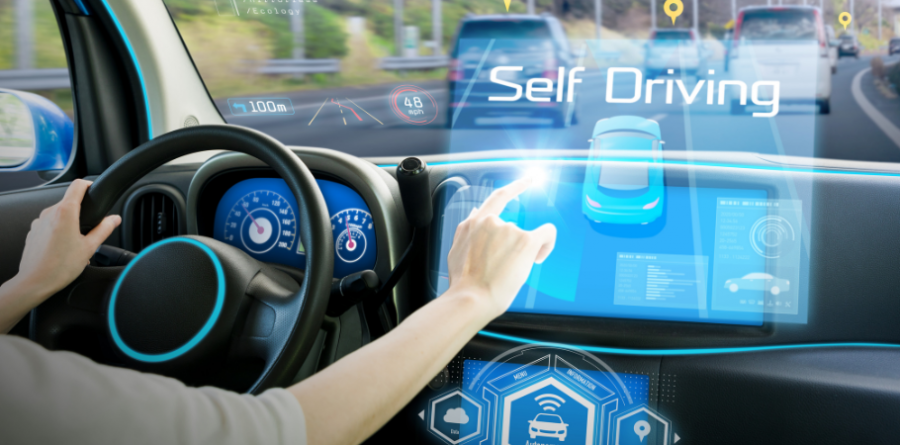
Artificial intelligence (AI) is expected to bring significant technological changes to our lives. Let’s take a look at the use of AI these days and find out some smart cities using generative AI and have made great innovations.
Together with the Internet of Things (IoT), blockchain, image processing, and digital apps, AI ranks among the most disruptive technologies. In fact, it already impacts education, healthcare, business, agriculture, and urban development. Each year, generative AI gains new capabilities, becomes more accessible, and scales up. This creates massive opportunities and risks. Many believe AI and related technologies will boost economic growth and public well-being in “smart cities.”
Recently, AI has shifted from using multiple small models for different tasks to single, monolithic models that handle everything. The business sector has already begun adapting. Although public institutions adapt more slowly, local authorities are often praised for being more responsive to their populations’ needs.
Smart Cities Using Generative AI: An Overview
By 2050, about 70% of people will live in cities. Cities attract individuals with diverse services and opportunities in education, health, jobs, housing, water, sanitation, transport, and culture. If cities use AI effectively, they can manage complex socioeconomic systems more efficiently.
A ‘smart city’ is an urban development concept. It aims to enhance residents’ quality of life by using technologies like AI, IoT, and digitalization to make life more sustainable, resilient, adaptive, and efficient. A smart city depends on an ecosystem of interconnected objects and services.
Of course, smartness is a tool, not an end goal. The aim is for cities to be more sustainable, resilient, adaptive, and efficient.
Recently, smart cities using generative AI can improve:
- Traffic management
- Public transport
- Parking systems
- Waste management
- Infrastructure maintenance
In other areas, the use of AI is hotly debated due to the challenges it presents:
- Security and surveillance
- Energy consumption and distribution
- Predicting future needs
- Measuring the environmental effects of AI infrastructure

Moreover, cities now use “digital twin” technology for sustainable planning. This concept combines digital tools and AI algorithms with urban systems, enabling future-ready upgrades. It integrates physical and digital city elements to enhance safety, efficiency, and inclusivity, while promoting low-carbon environments. Smart cities using generative AI exemplify how AI can optimize urban living by continuously learning and adapting to new data.
Smart cities, born from disruptive innovations, must ensure benefits for all citizens. They should have strong foundations to apply AI in urban management, land use, data analytics, and sustainability. In short, ethical data use and meeting public service needs are crucial.
AI and AI-enabled solutions provide new opportunities for service provision and support future-oriented urban development. However, to do this successfully, cities must adopt a people-centered approach.
5 Smart Cities Using Generative AI to Make Great Innovation
Here are five global cities leading the way with technology.
1. Buenos Aires: The versatile chatbot
One of the smart cities using generative AI so effectively, Buenos Aires, launched its chatbot, “Boti,” in 2019. It evolved with generative AI, reaching 11 million conversations by January 2022. This made it a preferred channel for citizens, according to the Observatory of Public Sector Innovation.
Initially, Boti was the official government channel for pandemic testing and vaccinations. Now, it also covers services like bike sharing and social care.
2. Singapore: 100 gen AI innovations
Singapore was the first country to have a digital twin, a virtual model of the city-state. Building on this, a government initiative launched last year has led to over 100 generative AI solutions. For example, one solution helps teaching staff quickly develop new course content, and another implements a chatbot for community centers, reports The Straits Times.

While many governments approach AI cautiously, Singapore is eager to leverage the technology. At the end of 2023, they announced a revised National AI Strategy, focusing on integrating AI into the economy. To support this, a research group of 17 MIT professors is studying the human-machine relationship, aiming to enhance existing AI initiatives in Singapore.
See more: Singapore’s Rise as an AI Hub
3. Amsterdam: Generating Sustainable Materials
Natural language processing, the backbone of AI chatbots like ChatGPT, uses word data to form new linguistic connections. A research project at the University of Amsterdam is now using a similar approach with molecules to create sustainable materials. Bernd Ensing, lead professor of the Artificial Intelligence for Sustainable Molecules and Materials (AI4SMM) project, mentions that AI helps build new molecules and materials, changing the way chemists work. This reduces reliance on “chemical intuition.”
The AI4SMM team initially focuses on creating energy storage salts, sustainable steel, safe plastic, and new plant proteins.
4. Dallas: Next-Level Autonomous Vehicles
Recently, autonomous vehicles have been tested with varying success. Now, new self-driving trucks are being tested between Dallas and Houston, Texas, using generative AI. Unlike standard autonomous vehicles that use data and images, the new Copilot 4D system is trained on lidar sensors. These sensors detect object distances and continuously visualize a 3D map of the vehicle’s surroundings, as per MIT Technology Review. This enables the vehicle to predict events up to 10 seconds ahead, anticipating problems.

Raquel Urtasun, CEO of Waabi, says their “AI-first” approach allows the system to learn from data instead of being taught specific reactions. If these generative AI vehicles prove safer and more reliable, they could tackle issues like supply chain hold-ups, carbon emissions, and labor shortages, notes the Toronto Globe and Mail.
5. Boston: Envisaging a Bicycle-City Future
Boston aims to become more bike-friendly, looking to Copenhagen as a model. However, locals worry about the impact, and not everyone can visit Europe to see the changes. Generative AI is now helping Bostonians visualize and hopefully embrace a new city layout.
Conclusion – Small Advice for Following Smart Cities Using Generative AI
In short, Artificial Intelligence (AI) is revolutionizing various sectors, including education, healthcare, business, agriculture, and urban development. Moreover, alongside disruptive technologies such as the Internet of Things (IoT), blockchain, and digital apps, smart cities using generative AI can make significant advancements . Furthermore, generative AI continues to evolve, offering new capabilities and expanding its reach. This presents both opportunities and risks. Many believe that AI and related technologies will boost economic growth and public well-being in smart cities. However, while businesses rapidly adapt to these changes, public institutions and local authorities need to catch up. Nevertheless, they are recognized for their efforts to meet community needs.
Governments and local authorities should prioritize the integration of AI technologies into their operations to enhance public well-being and economic growth. In addition, by fostering partnerships with tech sectors and investing in AI research, they can better respond to emerging challenges and opportunities in smart city initiatives. Thus, proactive measures will ensure that AI’s benefits are maximized.


